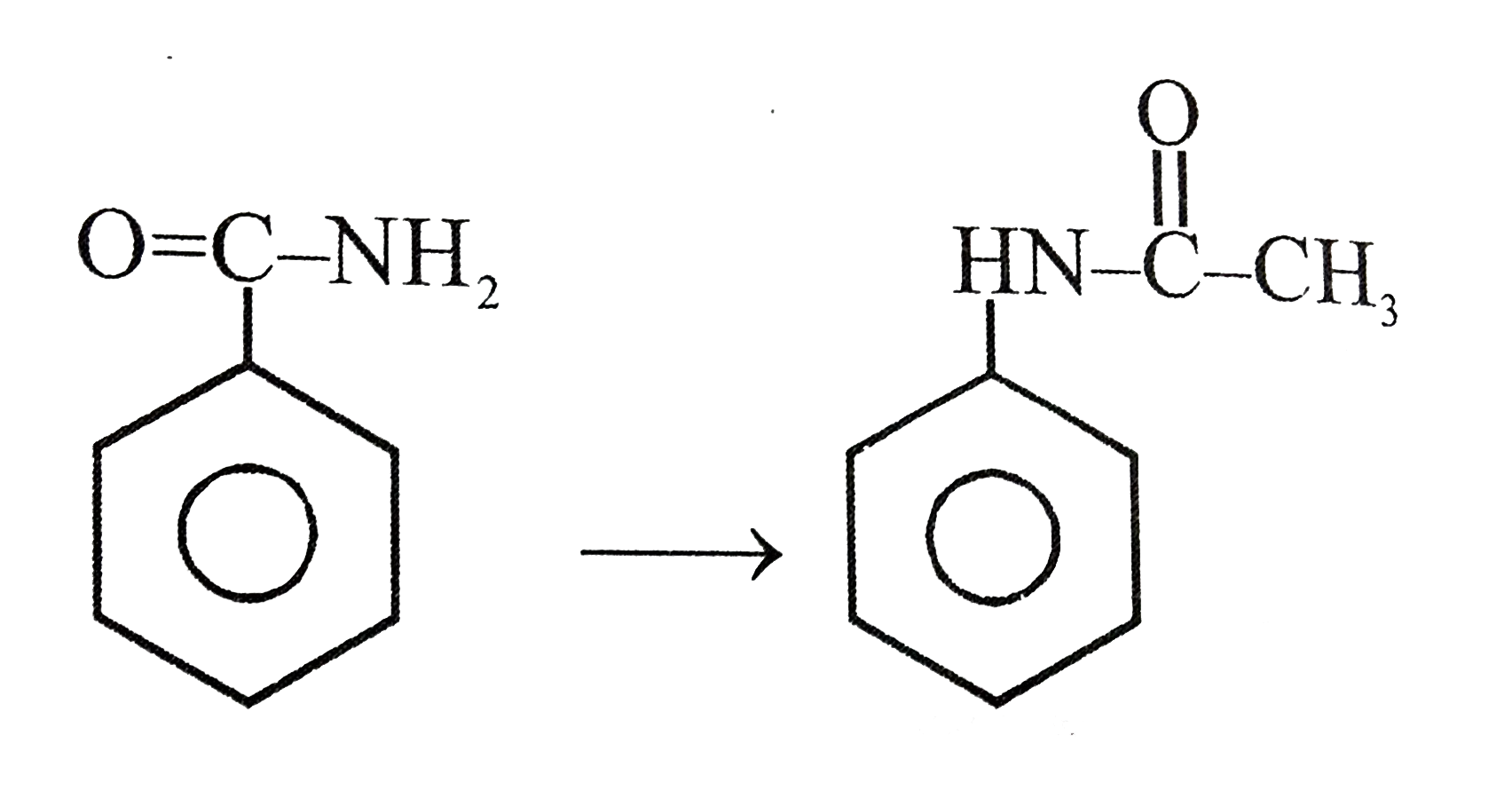Give reagents (inorganic or organic), needed to convert benzyl bromide into benzyl acetate
To convert benzyl bromide (C6H5CH2Br) into benzyl acetate (C6H5CH2OCOCH3), we can follow these steps:
Step 1: Identify the Reaction Type
We need to perform a nucleophilic substitution reaction where the bromine atom in benzyl bromide is replaced by an acetate group.
Step 2: Choose the Reagent
To achieve this conversion, we can use sodium acetate (NaOCOCH3) as the nucleophile. Sodium acetate will provide the acetate ion (OCOCH3) which will attack the benzyl bromide.
Step 3: Reaction Mechanism
1. The acetate ion from sodium acetate acts as a nucleophile.
2. It attacks the carbon atom bonded to the bromine in benzyl bromide.
3. This results in the displacement of the bromine atom, leading to the formation of benzyl acetate.
Step 4: Write the Reaction
The overall reaction can be represented as:
C6H5CH2Br+NaOCOCH3→C6H5CH2OCOCH3+NaBr
Alternative Reagent
Alternatively, we can also use silver acetate (AgOCOCH3) as the reagent. The mechanism remains the same, where the acetate ion from silver acetate will replace the bromine atom.
Final Answer
Thus, the reagents needed to convert benzyl bromide into benzyl acetate are:
1. Sodium acetate (NaOCOCH3)
2. Alternatively, silver acetate (AgOCOCH3)
---
We need to perform a nucleophilic substitution reaction where the bromine atom in benzyl bromide is replaced by an acetate group.
To achieve this conversion, we can use sodium acetate (NaOCOCH3) as the nucleophile. Sodium acetate will provide the acetate ion (OCOCH3) which will attack the benzyl bromide.
1. The acetate ion from sodium acetate acts as a nucleophile.
2. It attacks the carbon atom bonded to the bromine in benzyl bromide.
3. This results in the displacement of the bromine atom, leading to the formation of benzyl acetate.
The overall reaction can be represented as:
C6H5CH2Br+NaOCOCH3→C6H5CH2OCOCH3+NaBr
Alternatively, we can also use silver acetate (AgOCOCH3) as the reagent. The mechanism remains the same, where the acetate ion from silver acetate will replace the bromine atom.
Thus, the reagents needed to convert benzyl bromide into benzyl acetate are:
1. Sodium acetate (NaOCOCH3)
2. Alternatively, silver acetate (AgOCOCH3)
Topper's Solved these Questions
- BOOK - ICSECHAPTER - HALOALKANES AND HALOARENES EXERCISE - EXERCISE (PART - I OBJECTIVE QUESTIONS) (FILL IN THE BLANK)15videos
HALOALKANES AND HALOARENES
- BOOK - ICSECHAPTER - HALOALKANES AND HALOARENES EXERCISE - EXERCISE (PART - I OBJECTIVE QUESTIONS) (MULTIPLE CHOICE QUESTIONS)40videos
HALOALKANES AND HALOARENES
- BOOK - ICSECHAPTER - GENERAL PRINCIPLES AND PROCESSES OF ISOLATION OF ELEMENTS EXERCISE - EXERCISE (PART-I ( OBJECTIVE QUESTIONS )) (Fill in the blanks)60videos
GENERAL PRINCIPLES AND PROCESSES OF ISOLATION OF ELEMENTS
- BOOK - ICSECHAPTER - ISC QUESTION PAPEREXERCISE - PART-II(SECTION-B)74videos
ISC QUESTION PAPER
Similar Questions
Give reagents (inorganic or organic), needed to convert benzyl bromide into benzyl cyanide
View SolutionGive reagents (inorganic or organic), needed to convert benzyl bromide into benzyl ethyl ether.
View SolutionGive reagents (inorganic or organic), needed to convert benzyl bromide into benzyl alcohol
View SolutionGive reagents (inorganic or organic), needed to convert benzyl bromide into Benzyl iodide.
View SolutionGive reagents (inorganic or organic), needed to convert benzyl bromide into tri-n-butyl benzyl ammonium bromide.
View SolutionGive reagents (inorganic or organic), needed to convert benzyl bromide into (nitromethyl) benzene
View SolutionThe reagents needed to convert :
 View Solution
View SolutionHow will you convert benzyl chloride to benzyl alcohol ?
View SolutionThe reagent needed for converting
 is : View Solution
is : View SolutionWhich of the following reagents may not be used to convert alkyl chlorides and alkyl bromides into alkylfluorides?
View Solution

